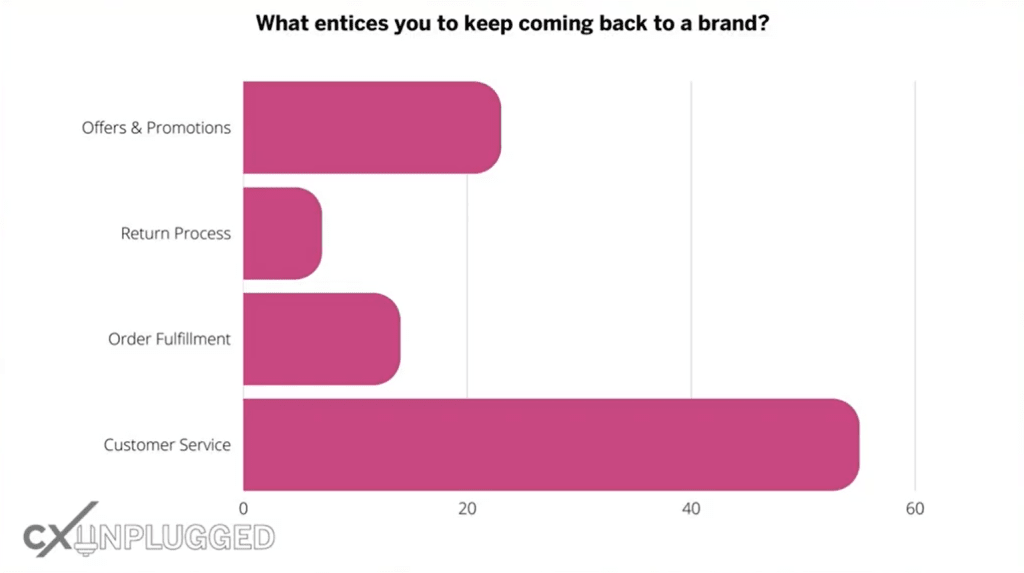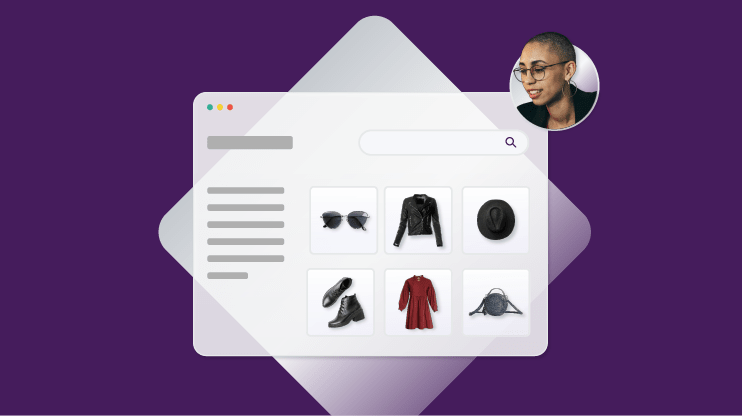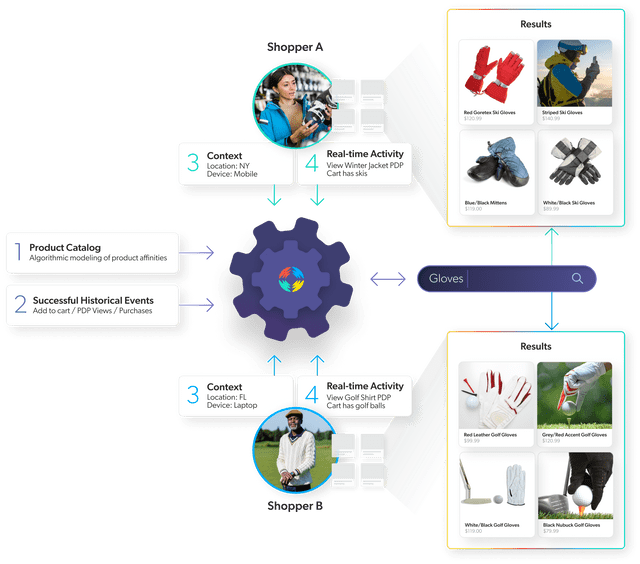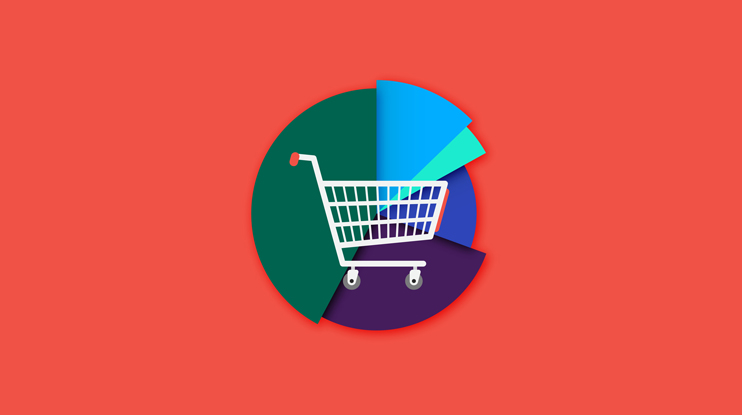$26 billion dollars. That’s how much the National Retail Foundation estimated that Valentine’s Day shoppers would spend in 2023 – an average of roughly $193 per person (up from $175 in 2022). Out of an average $17-per-person increase, $14 went toward giftees other than partners including co-workers, teachers, friends, classmates, and even pets.
The biggest winners from that holiday spend won’t be the companies offering the best holiday deals and promotions, shared Sheila Morin, CMO at Coveo, at a recent CXUnplugged session. The largest share of the proverbial pie will go to the players who keep people coming back to buy again. In other words, retailers who think customer-centric and personalization-first.
And Morin should know. Prior to Coveo, she was an executive on the brand management side at such retail stalwarts as L’Oreal, Cirque du Soleil, Danone, and Proctor and Gamble. Putting on her brand hat, she shared what she would have told her B2C self about the impact of seasonal shopping.
The Moments (And Experiences) That Matter Most
Every industry has its Valentine’s Day – a holiday or seasonal event that brings customers in through the front door. In the yogurt business, it might be back-to-school season. For Cirque du Soleil, Black Friday is an unmissable holiday. Superbowl is a key opportunity for beer and chicken wings. For some fragrance retailers, over two-thirds of all sales happen around the Christmas season.
“Brands need to understand their peaks and valley and see how they can own more of those key moments during the year,” Morin said. “If you miss those opportunities, you can’t catch up.”
Seasonal offers are part of the equation. They can help draw more holiday shoppers to your brand for a single purchase. But if retailers want to turn a single holiday gift into long-term customer loyalty, they’ll need to provide a personalized experience for their shoppers.
“We are in the experience economy,” she explained. “When [shoppers] go to a brand, they expect truly amazing product discovery, suggestions, and inspiration … and they are losing patience with brands that are not giving them the right customer service.”

In fact, customer service is the most influential factor that entices people to come back to a brand over and over again, beating out offers and promotions. Seventy-six percent of people leave after one bad customer experience, and most won’t tell you when those bad experiences happen.
So how can you prepare for your experience-focused Valentine’s Day/seasonal shopping moment?
Technology and personalization play key roles, said Winnie Albornoz, director of product marketing, SAP. “A lot of retailers are leaning in on providing a more customized, more personalized experience as people are shopping on their websites,” she added. “[When] they understand their shoppers, they can create more customized and personalized advertising, experiences, and product recommendations for them.”

Build Strong Digital Commerce Experiences With Personalization
Personalization in ecommerce and digital retail starts with understanding a customer’s intent and ends with delivering an experience that’s uniquely relevant to their individual needs and interests, based on their demographic information and shopping behaviors. That could include searches, browsing history, past purchases, and more.
If you’re imagining hyper-targeted product recommendations, you’re on the right track. In fact, 91% of shoppers say they’re more likely to shop with a brand that provides relevant offers and recommendations. But when it comes to making the experience feel personalized, “suggested for you” products are just the tip of the iceberg.
Personalization on your ecommerce site can also mean surfacing the most relevant search results, said Morin. “Personalized search means I understand what you’re looking for quickly and I adapt to you.” Yes, even in anonymous sessions.
For example, let’s say a customer has golf balls in his cart, looks at a golf shirt, and then, returns to the search bar, and types “gloves.” Rather than displaying a page full of baseball or skiing gloves (a.k.a. irrelevant results), a personalization engine knows to bump men’s golf gloves to the top.

The best personalization is done fast, at scale, and throughout the entire customer experience. In other words, with AI-driven technology. Let’s break that down.
… Within a Few Clicks
Effective personalization isn’t just about serving up the most relevant products to each shopper. It’s about getting things right as early in the process as possible.
That could mean surfacing the best search results within the first few listings. It could look like self-service portals and chatbots that allow customers to get answers to their questions without spending time talking to an agent. Even simple touches like autocomplete and autocorrect can reduce the amount of time from point A to point B.
Ultimately, that speed can boost profitability, Morin added. “People will pay more for that. And then they’ll stay on your website, on your app, or on your site for a longer time shopping.”
… at Scale
When you’re working with a small group of customers, you might get away with personalization done manually or with simple automation. But if you’re going to deliver it to every single shopper, from the moment they land on your site, you’ll need a little help from AI.
“AI can be an amazing asset to propose the best next product for you personally because it understands your intent. In a few clicks, it can understand what you’re actually looking for,” she explained.
Pair that with the ability to align multiple data points like shipping cost and inventory, and you’ve got a powerful engine that drives a better experience across thousands of visitors. “Then we can propose the perfect product for you with a much, much higher chance of getting in your cart.”
… Across the Entire Journey
Personalized recommendations and relevant search results make a big impact early on in the purchase journey. But is your customer experience a smooth one after the order’s been placed? Don’t sleep on the potential of ongoing support, Morin advised. Personalization can help empower customers and agents alike through the entire purchase and post-purchase lifecycle.
From first-time browsers to loyal fans, AI can help customers find the support content they need as early as possible in the process, without ever needing to contact another person. (In fact, Forrester reports that 72% of customers prefer self-service – a fact we dive deeper into here.)
And if a person does need to call? Tools like Insight Panels seamlessly bring customer context and relevant documentation into a support agent’s workflow. “And the agent gets the best info possible on their consumers,” Morin added. The result: quicker responses, better answers, and happier customers who are more likely to return.
If that sounds like a lot to ask from one piece of software, you’re right. That’s why Albornoz recommends looking into integrations that bring your technology stack together in harmony. “Make sure that every component every piece is meant to deliver on the purpose of what you’re trying to deliver.”
Say “Be Mine” to AI-driven Personalization
Customer expectations are at an all-time high. McKinsey reports that 71% of consumers expect a personalized experience when they’re shopping online… and 76% get frustrated when they don’t find it.
Technology is key to delivering those kinds of experiences, Morin said. “If you don’t have AI right now, you will compete with AI.” And holidays like Valentine’s Day show us how we can gain a competitive advantage with that technology – not just one day a year, but the remaining 364 days as well.
“How do you capture those people, bring them to your brand and then keep them forever after that by delivering the best experience possible?” Morin asked. “We know that AI will help you automate processes and enable merchandisers to personalize not only the surface but also the full experience.”
Ready to fall in love with AI-driven personalization? Don’t miss the full webinar!


